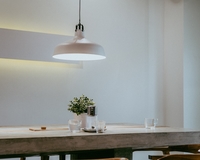Property North Wales
- Home
- Add Listing
- Architects
- Builders and Tradesmen
- Conveyancing
- Estate Agents & Letting
- Financial & mortgage Advisors
- General
- HIPS and EPC
- Home Improvement
- Other Financial Services
- Property Overseas
- Quick Rapid House Sale Deals
- Surveyors & Valuers
- Roofing tips
- Links
- Blog
Quick Search
 It is well known that LEDs are a much more environmentally friendly option than their incandescent counterparts. However, that doesn’t always guarantee a switch; if you’re still on the fence between LED rope lights and incandescent bulbs, here are some things you should know before you make the switch. Easier than you Think To get all the benefits of LED without replacing all of your existing fixtures, all you will need to do is replace the incandescent screw-in bulbs with screw-in LED bulbs. It is important to note though, you need to replace the incandescent bulb with a comparable LED so that it will match the performance of the previous bulb. Save you Money At first, it might not seem like LEDs are going to be a very lucrative switch over. They are more expensive to buy than incandescent bulbs, but the prices are coming down. LEDs are more of a long term investment; so while the upfront cost might be higher, the payback time is worth it. Some LEDs can last two decades (or even longer) with average use before they begin to dim; versus the approximate two year life for incandescents. LEDs have a gradual decline rather than the sudden burnout experienced with incandescent bulbs. Then there is the overall amount you’ll save to consider. If you swap out only one lightbulb with LED, it’s been predicted that you’ll reduce the amount of energy consumption by between 70 and 90%. Less Energy Consumption Looking at the big picture, LED lighting converts 95% of energy it consumes into light; unlike incandescent bulbs which convert only 10% of energy into light. The other 90% of energy remaining is wasted as heat. Flexible Light Direction Incandescent bulbs throw light around at all angles, making it extremely difficult to direct it to a particular spot. LED lighting on the other hand, is directional. This means that the light can be better focused to where it is needed. Range of Colour Temperatures LEDs come in a wide range of different colour temperatures. Each lightbulb has a CCT (Correlated Colour Temperature), which corresponds to a Kelvin (K) temperature scale. The lower the Kelvins, the warmer and more yellow the light is going to be; the higher the Kelvins, the cooler and bluer the light is going to be. Deciding what colour to go for is all down to personal preference. Light colour that is ‘natural white’ or ‘cool white’ are brilliant choices for general ambient lighting. They also work very well for focused light in kitchens. |
Archives
September 2023
August 2023
July 2023
May 2023
March 2023
November 2022
October 2022
July 2022
April 2022
March 2022
February 2022
January 2022
December 2021
November 2021
October 2021
September 2021
August 2021
June 2021
May 2021
April 2021
March 2021
January 2021
December 2020
November 2020
October 2020
September 2020
August 2020
July 2020
June 2020
May 2020
April 2020
March 2020
February 2020
January 2020
December 2019
October 2019
September 2019
June 2019
October 2018
September 2018
August 2018
July 2018
May 2018
April 2018
March 2018
October 2017
August 2017
July 2017
May 2017
March 2017
February 2017
January 2017
November 2016
October 2016
August 2016
March 2016
January 2016
October 2015
September 2015
July 2015
April 2015
March 2015
January 2015
September 2014
August 2014
July 2014
June 2014
May 2014
April 2014
March 2014
February 2014
January 2014
December 2013
November 2013
October 2013
August 2013
July 2013
May 2013
March 2013
December 2012
November 2012
July 2012
June 2012
April 2012
Partner Sites